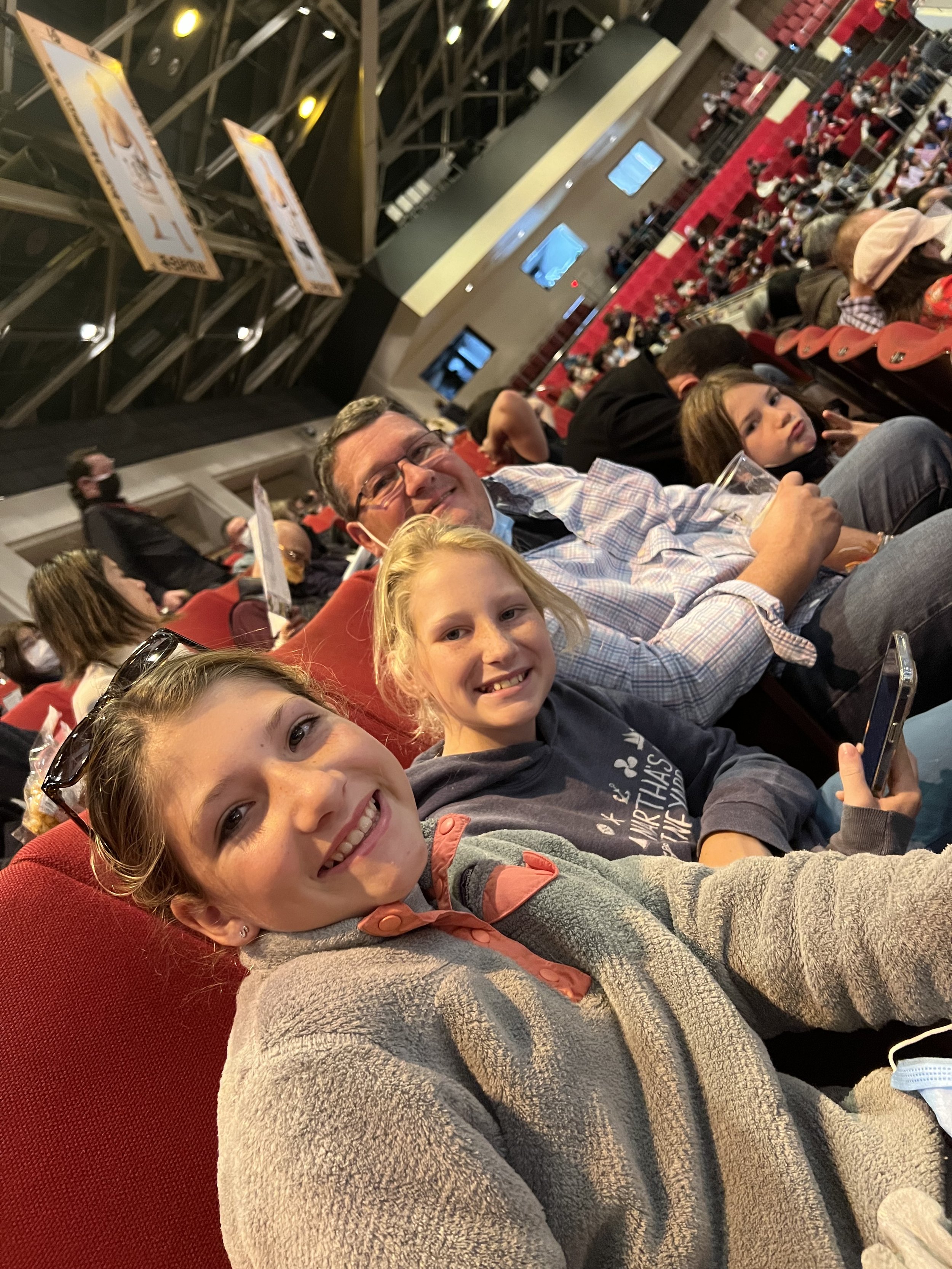SUMO
On Friday, we went to the Grand Sumo Tournament in Tokyo, and saw the Intermediate and Senior divisions compete. We’ve been to many different sporting events, but this was a new one for us. It was so awe-inspiring to watch. I think I was in a Sumo trance the whole time! I’m so glad we went; it was enthralling to watch and interesting to learn more about it!
Sumo started over one thousand years ago in the Heian period (794-1192). During that time, the emperor and empress watched this sport as a form of entertainment as sumo was only performed for royalty. Starting in the Edo period (1603-1868), sumo was introduced to the Japanese public and later became known as Japan’s national sport.
The first thing we noticed was how quiet it was, compared to other sporting events. For example, at a hockey game there are bright lights, loud music, people cheering for their team, etc. At the Sumo tournament, people would only cheer and clap occasionally. There was no music or flashing lights and most of the time the only real noise we heard was the grunting of the wrestlers or the match official shouting words in Japanese.
Another thing we noticed immediately was the size of these Sumo wrestlers; they are HUGE!!! I wondered what they could possibly eat to get that large and heavy (some wrestlers weighed more than 500 pounds!). I later researched what they ate and discovered they obey a very strict diet to be in physical strength to wrestle. One main part of their diet is a meal called chanco nabe which is a mixed stew that contains chicken, tofu, vegetables, broth, prawns, fish, and many other foods. They also usually eat many servings of rice with it.
We also noticed the many rituals performed before the wrestling began, which would last 5-10 minutes. The rituals performed by the wrestlers include extending their arms, stretching, stomping, slapping or clapping themselves, squatting, and glaring at each other. They also throw handfuls of purifying salt into the ring and drink and wipe themselves with sacred water multiple times. These rituals are known as a preparation ritual called shikiri. We wondered why they have to do so many rituals, and discovered they are very meaningful. The sport of Sumo is very closely tied with Shintoism. All of the rituals are seen as offerings to the gods, or seen as a way to ask for a blessing from the gods. There is always an official who dresses like a Shinto priest and a Shinto shrine is built over the ring, usually with the Japan flag on it.
If you ever have an opportunity to go to a Sumo match, do it! It is so interesting and mesmerizing to watch!!






